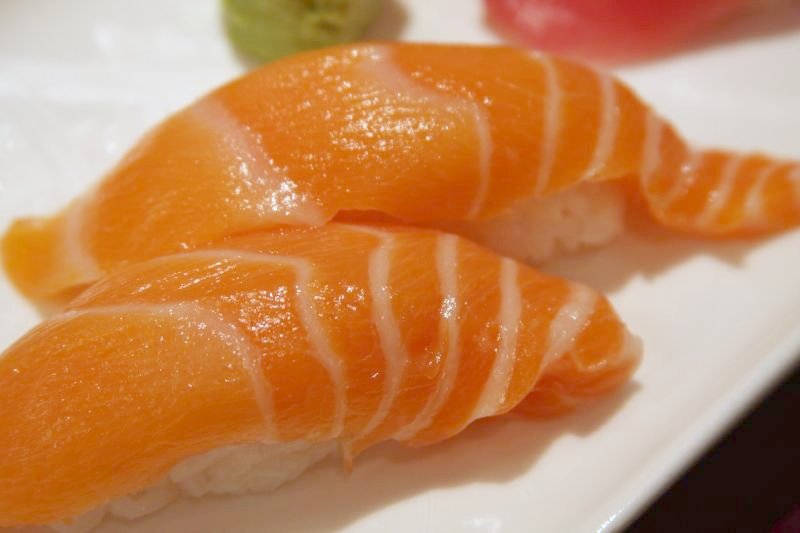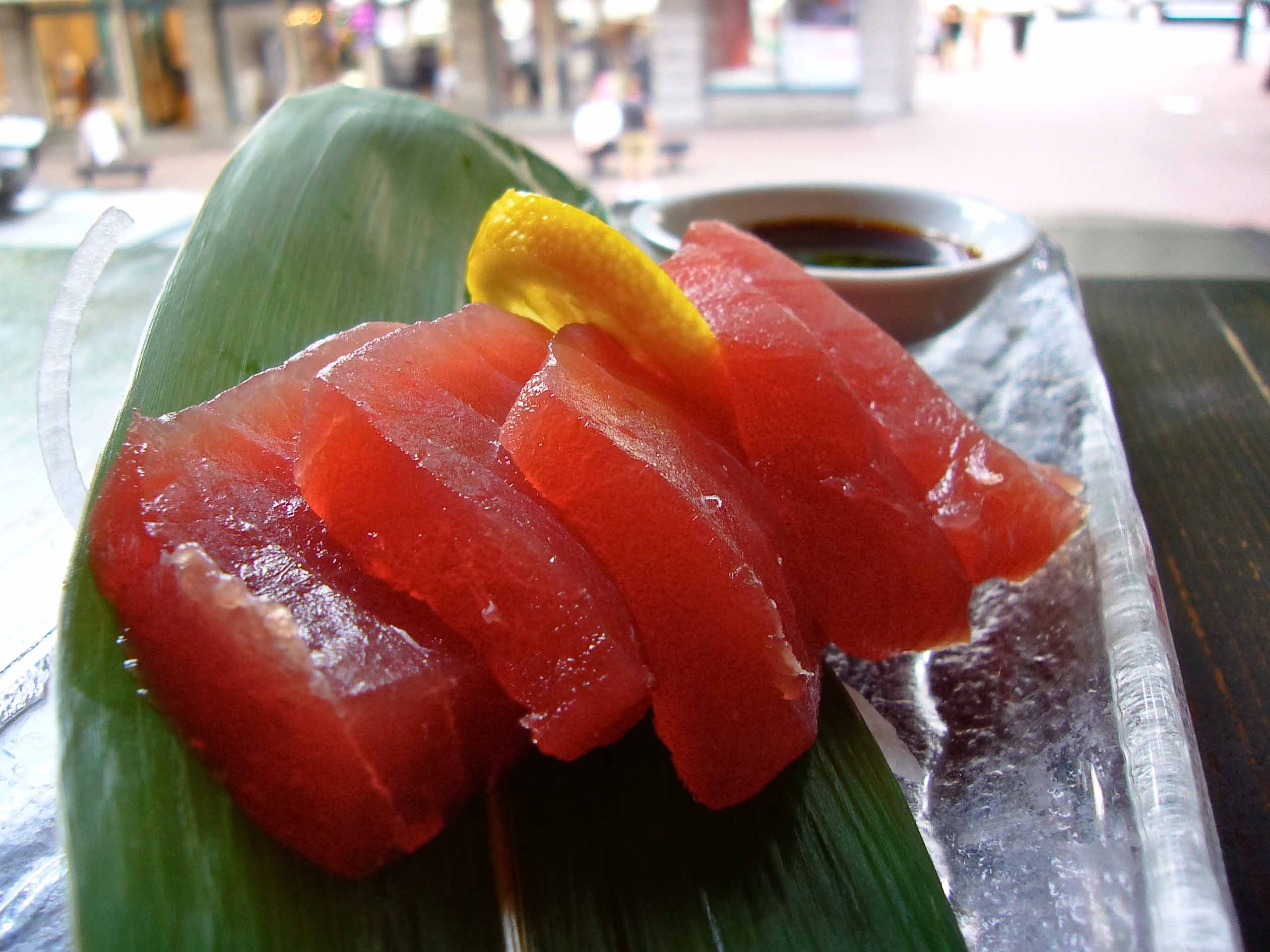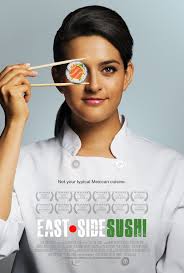
Time: 1hr 47min
In English, Spanish and Japanese, with English subtitles
“One cannot think well, love well, sleep well, if one has not dined well.” Virginia Woolf
“If you really want to make a friend, go to someone’s house and eat with him… the people who give you their food give you their heart.” Cesar Chavez[1]
There is an early scene in the film East Side Sushi (2015) in which the protagonist, a young Mexican-American woman named Juana,who realizes her passion lies in becoming a sushi chef, is repacking her chef’s knife after use. With great tenderness she encloses it in layers of soft fabric and firmly ties the bundle together, preserving the blade from nicks and exposure until the next time she wishes to wield it. This subtle act speaks volumes: this is the instrument through which she wields power and reaps joy.
I can always tell whether a person is a lover of cooking by the way they have set up their kitchen – and especially from the type and quality of their knives. Passion recognizes passion. The kitchen is my anchoring ground as well as a place where conventions fall away; it is the site of pleasure in renewing relationships or fomenting new loves.
In my life, exploring food and cooking is a robust vehicle for expressions of my sexuality. I cite ‘sexuality’ here in its comprehensive definition, meaning not just attraction and orientation but also that “sexuality is everything about someone’s person hood and energy: the way they interact with other people and the world… [sexuality is] about everything that stimulates our excitement, creativity, and engagement with the world around us.”[2] Underscoring this aspect of Juana’s sexuality is the film’s greatest contribution – as well as the reckoning that in reality, few have the resources and opportunity to experience ‘luxuries’ like pleasure, creativity, and a fair livelihood that does not put one at risk of exploitation and violence.
The reviews for East Side Sushi, director Anthony Lucero’s debut film, have been unequivocally positive. Called a “feel good” foodie film and a “charmer,” the work is a festival darling that has earned 13 awards so far. Like a well-executed piece of nigiri sushi,[3] at a glance the spare simplicity of the film conceals its nuances. But within its modest frame, Lucero’s narrative grapples with a vast array of central contemporary debates and concerns. Considering this text from a reproductive justice framework[4] and the capabilities approach,[5] it is a comment on how systemic poverty and racism limit access to food, health care,[6] equal opportunities for employment, safety and well-being; but also limit chances for pleasure and creativity. Social justice isn’t about merely meeting basic needs and rights, but is also about helping all humans thrive. It’s doubtful that anyone would argue that the right to food, in terms of sufficient nutrition, is not fundamental. But beyond fulfilling this basic requirement for survival, the privilege to have enough food and choice in terms of what one purchases and consumes is often siloed as a luxury.
Just as most of us wouldn’t argue that sex should only happen for reproduction, eating and preparing food isn’t just about keeping bodies alive; enjoyment of food and cooking fulfills other human capabilities as well, for instance for play and building community.
Juana Martinez is a young Mexican-American woman living in East Oakland, California, with her father and her seven-year-old daughter, Lydia. East Oakland is a historically oppressed area, home to many low-income people of colour and the kind of violence that usually accompanies such systemic poverty. The Martinez family exemplifies the difficulties facing the American working poor. The entire family rises before 4 a.m. in order to prepare their fruit-vending cart for the day, get Lydia to school, and Juana and her father to their other jobs at a gym and an outdoor sporting goods store, respectively. The failure of the one aging pickup truck they share to start one evening is a pivotal moment. Juana has been managing the cart by herself and while waiting for her father to come by with the truck, two men pistol-whip and rob her. The fruit cart is thus no longer a sustainable, safe source of income, since as we learn, vendors are the targets of increasing violence in their area, but Juana has few other options. One day she spots a ‘Help Wanted’ sign in the window of a Japanese sushi restaurant, Osaka, near her job at the gym. She stares through the window, clearly fascinated by the elegant sushi rolls being served, but lacks the confidence to go in.
Eventually, she musters up the courage to interview, and lands the position. Especially exciting to her are

the medical benefits, which her family previously lacked. As a kitchen assistant working in a cuisine she has neither cooked nor ever eaten, one would expect her learning curve to be steep. Instead she flourishes, stimulated and delighted by every aspect of sushi, guided by co-worker Aki who takes her on as an informal apprentice. Allowed to keep the fish that the restaurant doesn’t sell, she begins practicing sushi-making at home. Much like 2011’s Jiro Dreams of Sushi,[7] the film is punctuated with sensuous close-up scenes: Juana filleting salmon, rubbing sticky rice between her fingers, her eyes crinkling and widening when she tries tuna sashimi for the first time. Within a year, she is keeping pace with and even surpassing the other chefs at Osaka, though her contributions have to remain hidden behind the curtain separating the kitchen from the main restaurant.
Her true passion is now to become a professional sushi chef, but despite her obvious talent and Aki’s support, she faces resistance from the restaurant’s curmudgeon of an owner, Mr Yoshida, and the other sushi chefs. They all claim that this is not a job for her, that sushi is the purview of Asian men.[8] Their discrimination comes not just from basic sexism (for instance, when Juana is first employed at Osaka, one of the chefs comments that it’s a relief to finally get some “nice scenery” in the kitchen), but also brings forward questions of ethnic ‘authenticity’ and customer expectations as to the ‘face’ of regional cuisines.
During the most memorable monologue of the film, Juana points out that she “deserves an opportunity, like everyone else,” that Latinos are working in the back of every kitchen in America making the chefs look good. Their labour goes unrecognized and usually undercompensated. More than this, like we see in the character of Juana’s father – who initially challenges Juana’s dream not because of her gender but because he is afraid for them to take an unknown professional risk – people who have been continuously exploited and without opportunity have learned that subsistence, just “getting by,” is typically the best that they can hope for. The world seems to say that pleasure and success are not for them. Juana’s character refuses to accept this: she has few options for employment, but if the issue were only a matter of supporting her family she eventually could have gotten the same old job in a taqueria that she’d done in the past. But bored and craving new challenges, she is voracious for new tastes and to expand her skills as a chef – she’s already a great chef of Mexican cuisine, as she tells her father when he pleads with her to drop this Japanese idea.

East Side Sushi possesses a few flaws. At times it is obviously low-budget and relies on some contrived underdog narrative conventions such as the serendipitous televised “Champions of Sushi” competition that Juana enters in order to prove her mastery as a chef. Yet the film is a much more important text than its limited theatrical run implies. It refuses to fall in line with conventional cinematic depictions of female cooks and chefs, who are often portrayed as seductresses and/or in need of ‘conquering’ by men.[9] By pointing out East Side Sushi’s divergence, I don’t mean to devalue previous films featuring female chefs. It is still rare enough to see media depicting women as openly sensuous and autonomously expressing their sexuality via the methods of their own desires, within a realm that they control (whether the kitchen or elsewhere).
This said, we need more films like East Side Sushi that expand the conventions of this sub-genre and center female protagonists who are expressing their sexuality but who are not sexualized; who do not (necessarily) seduce with their cooking, but use their talent as a medium through which to achieve the respect and position they deserve. A disadvantaged protagonist fed up with being ‘in the back’ whose ambition is never minimized serves as a clear reminder that without privilege, the ‘opportunity’ and pleasure that all humans deserve are hard to come by. In an era of renewed emphasis on ‘bootstraps’, when politicians continue to insist – against all evidence – that success is inevitable for anyone who works hard enough, it is more important than ever that we tell stories like this one.
[1] Citation for quotes
[2] Susannah Cornwall, Theology and Sexuality, 1.
[3] Usually a small piece of raw salmon, tuna, or other fish pressed onto a ball of vinegared sticky rice.
[4] According to Kimala Price, frustrated by the individualist approach of the “choice” paradigm used by the mainstream reproductive rights movement in the U.S., a growing coalition of women of color organizations and their allies have sought to redefine and broaden the scope of reproductive rights by using a human rights framework. Dubbing itself “the movement for reproductive justice,” this coalition connects reproductive rights to other social justice issues such as economic justice, education, immigrant rights, environmental justice, sexual right, and globalization, and believes that this new framework will encourage more women of color and other marginalized groups to become more involved in the political movement for reproductive freedom.
[5] Martha C. Nussbaum; for list of relevant capabilities see pp. 78-80 (2000).
[6] Including reproductive health care. Nothing is mentioned in the film about whether Juana’s daughter was planned, whether she had a partner or a husband and where he is now, if he contributes child support, etc. The viewer gets the sense, though, that as a young single mother, Juana represents the high percentage of poor Latina women in the U.S. without adequate access to comprehensive reproductive health care – including reliable contraception and safe abortion – and as a result end up having unplanned children while still in their teens or early 20s.
[7] Dir. David Gelb
[8] Especially Japanese men, though as Juana points out to Mr Yoshida, his argument for ‘authenticity’ falls short as one chef is Korean and another Chinese – what matters most is customers’ perception that these men are Japanese, apparently.
[9] For instance, Like Water for Chocolate, Chocolat, No Reservations; a possible exception being Deepa Mehta’s Fire, which depicts sisters-in-law cum lovers, Radha and Sita, as seductresses but of each other. Their mastery of the family’s take-away business is also one of the main factors that give them the confidence to leave their marital home, giving them a means of financially supporting themselves elsewhere.